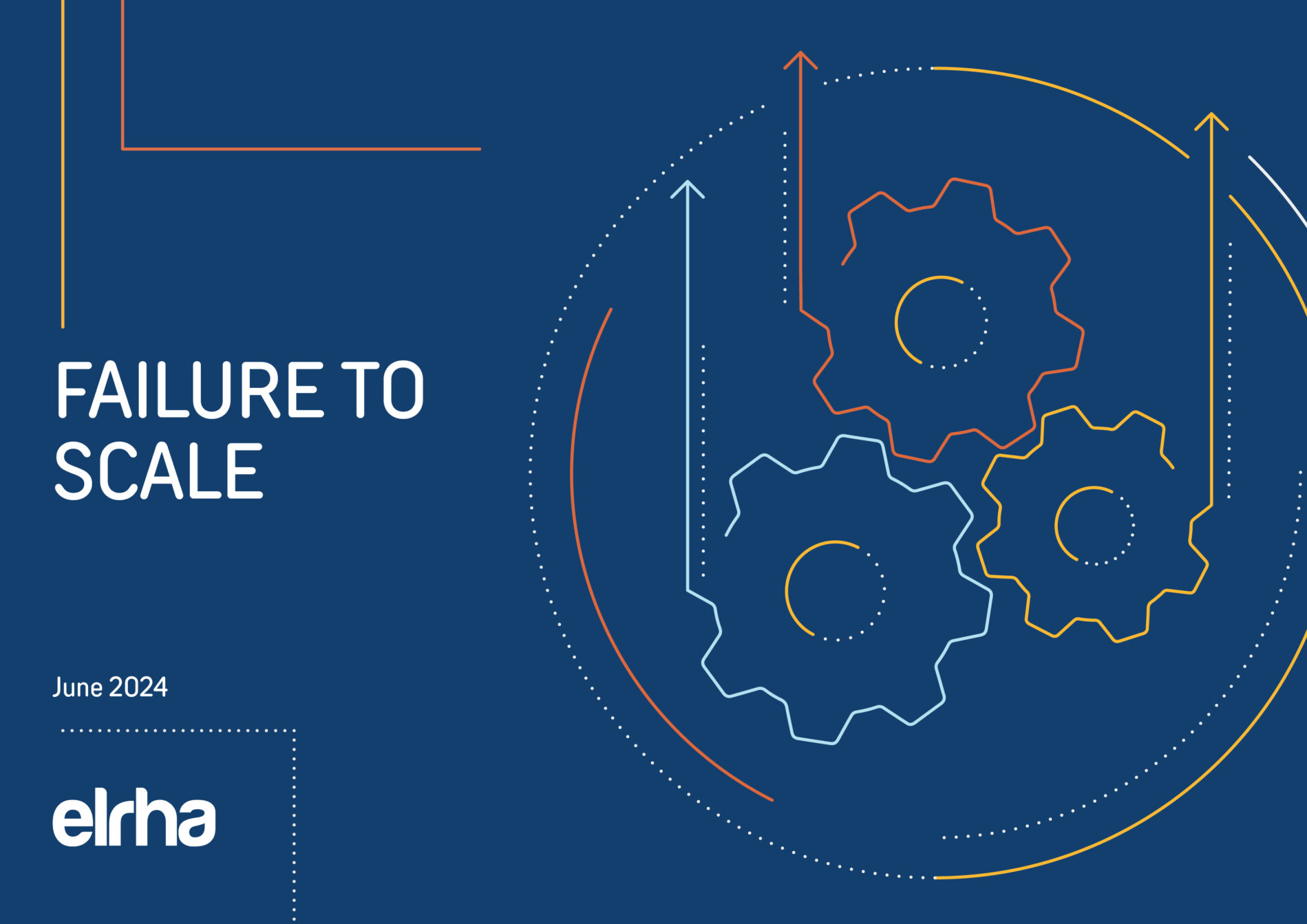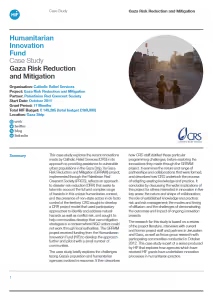Gaza risk reduction and mitigation


This case study explores the recent innovations made by Catholic Relief Services (CRS) in its approach to providing assistance to vulnerable urban populations in the Gaza Strip. Its Gaza Risk Reduction and Mitigation (GRRAM) project, implemented through the Palestinian Red Crescent Society, reflects an approach to disaster risk reduction (DRR) that seeks to take into account the full and complex range of hazards in this unique humanitarian context, and the presence of non-state actors in de facto control of the territory.
CRS sought to develop a DRR project model that used participatory approaches to identify and address natural hazards as well as conflict risk, and sought to help communities develop their own mitigation strategies in a context where NGO actors could not work through local authorities. The GRRAM project received funding from the Humanitarian Innovation Fund to develop the approach further and pilot it with a small number of communities.
This is one of 15 case studies exploring the dynamics of successful innovation processes in humanitarian action. The case studies examine what good practice in humanitarian innovation looks like, what approaches and tools organisations have used to innovate in the humanitarian system, what the barriers to innovation are for individual organisations, and how they can be overcome. The case studies are synthesised in the summary report, ‘More than just luck: Innovations in humanitarian action‘.